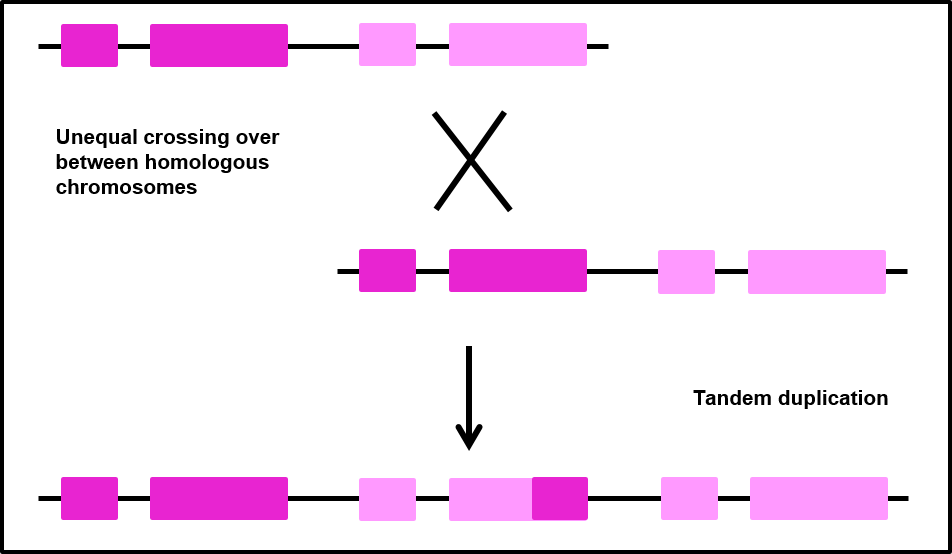Independent Gene Duplications
Independent gene duplications are small scale duplications, involve two main approaches i.e., reterotransposition and unequal crossing over.
Retrotransposition
Retrotransposition is a mechanism in which messenger RNA (mRNA) is reversely transcribed into complementary DNA (cDNA) and randomly inserted at new genomic positions (Zhang 2003) (Figure 1). The resulting product of retrotransposition is retrogene, having poly A tail and flanking short direct repeats, lacking the regulatory sequences and intronic regions. Necessary elements required for the transcription, like promoter and regulatory sequences are deficient due to retrotransposition, thus result in the creation of pseudogene (Long 2001). In human genome 70% of pseudogenes originated through retrotransposition events (Torrents et al. 2003). In some cases duplicates express easily and remain functional, if the insertion of cDNA is occurred at downstream of promoter region (Long 2001).

Figure 1: Retrotransposition occurs when mature mRNA is reversely transcribed into cDNA and randomly inserted in the genome.
Unequal crossing-over
Unequal crossing-over of homologous chromosomes during recombination event results in tandem gene duplication. Such type of homologous recombination creates tandem repeats on one chromosome and deletion of sequences on other chromosome. (Russell 2002). Duplicated region whether comprises of a gene, a portion of a gene or several genes, is determined by position of crossing over (Figure 2). If introns were present in duplicated gene, then the duplicated copy will also have intronic region (Zhang 2003). Increased rate of unequal crossing-over along with the incidence of tandem duplications corresponds to the genomic evolution (Russell 2002).

Figure 2: Unequal crossing over of two homologous chromosomes generates tandem duplicates.
Useful references: